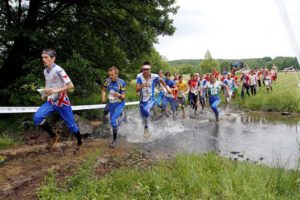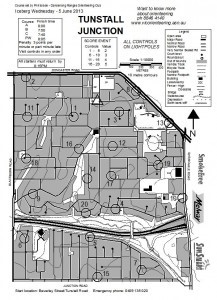What is Orienteering?

Orienteering is an adventure sport where participants navigate using a map and compass to find their way between control points of various natural and man-made features marked on a specially drawn map.
If you like excitement, fresh air, and adventure, orienteering is the sport for you. And it won’t cost you a fortune!
Why Orienteering?
- It’s an adventure sport, and people love adventure
- Fitness – It is an enjoyable way to get fit and stay fit
- Challenging – It is mentally challenging as well as physically challenging.
- A sport for all ages – Your age does not matter, as courses cater to all ages and all levels of fitness
- It’s a sport to meet people and make new friends
- It’s a sport for the whole family
It doesn’t matter how young or old or how physically fit you are, orienteering caters to all ages with a range of courses to cater to recreational walkers to elite athletes. You can go on your own or with friends and family, and go at your own pace.
Orienteering offers people the chance to learn how to navigate confidently, whether through the local streets and parks of cities or out in the state forests.
Course lengths vary from about 1km for beginners and children to over 10km for experienced adult orienteers.
Where do you do Orienteering?
Orienteering takes place in a variety of outdoor places, from town and city parks to forests and bushland. Each event may have a number of courses of different lengths and levels of difficulty occurring at the same time.
The skills required for orienteering are in choosing the best route between control points. A beginner’s course may not offer a choice, but as you progress, you will learn to decide between options. Over a hill may be shorter in distance, but it takes longer than going the long distance around the hill.
The mental challenge, as well as the physical activity, makes orienteering a popular sport.
Orienteer with your friends and family and share your experiences afterwards. Many events are within a few miles of your front door!
The best way of getting started is simply to contact a club or go along to an event. There will be lots of experienced orienteers to help and advise you. There will be courses for everyone, and it won’t cost a lot. The entry fee may vary. You don’t even need a compass or any special kit to try the sport.
Getting Started with Orienteering
- Events are held all over Melbourne and around Australia, all year round
- Come to as many or as few events as you wish and “pay as you go”
- No pre-registration required
- Run or walk, individually or in a group
- Participants of all ages and abilities are welcome (including dogs on leads)
- Entry fee for adults is $5 per event, Juniors (under 21) $2 per event (subject to change)
Participants each receive a map with 20-25 pre-marked control points and a card that is used to record the controls. Controls are positioned on features such as light poles, fences, or trees. All participants start together and must return to the Finish within a designated time, or after locating a designated number of controls. It’s up to you to decide which controls to go to.
When you arrive: Look for ORIENTEERING parking signs, or park as directed. Then head to the Registration table and ask for assistance. We’ll help you choose a course, give you a preview of the map, and provide some instructions. You’ll then fill in a registration card and pay your entry fee. Just before the start, the course setter will give everyone a briefing and hand out maps. When the “Go” signal is given, you can turn over your map and begin your course.
Courses: Participants carry a control card which they ‘punch’ at each control location. This card must be handed in at the Finish. All participants MUST report to the Finish even if they did not complete their course, for safety reasons. Courses close 75 minutes after the advertised start time. Competitors on a runner’s course may run and/or walk. However, if you’re on a Power Walkers course, then you MUST walk at all times.
The two formats used are called SCATTER and SCORE.
SCATTER:
-
-
- Used for Summer Running courses
- Locate a designated number of controls in any order. The first to finish with the correct number of controls wins
- Course lengths range from 2.5 km to 10 km
- Choose any course you wish from the four or five options available
-
SCORE:
-
-
- Used for Power Walking courses in Summer, and for all courses in Winter
- Controls have values ranging from 2 to 5 points. Collect as many points as you can before a set finish time
- Finish times vary from 40 to 60 minutes, depending on the course selected
- Penalty points are deducted for being late, so you need to wear a watch
-
RESULTS are compiled and published here, usually within 1-2 days. The winner of each course receives 100 points, the second winner receives 99 points, etc. Points are tallied each week to determine the overall placegetters at the end of each series.

Maps
-
-
- Black and white, A4 size, at 1:10,000 scale
- Similar to (but more accurate than) a Melway or Google map, and showing contours
- Show you where you can and can’t go, along with all the necessary event information
- Any changes to the map will be advised at the pre-event briefing
-
Groups: Park and street orienteering is a delightful group or team activity for schools, scouts, sporting teams or social clubs. We also welcome disability groups with carers. If you would like to bring a group, please contact us a week before the event so that we can ensure sufficient maps.
More: Park and street orienteering is run by clubs and Orienteering Victoria. Members receive a great range of financial and other benefits, as well as the opportunity to meet new people and learn new skills. Visit www.vicorienteering.asn.au to find out about all aspects of orienteering in Victoria. You can also sign up to receive our weekly O-News e-bulletin.
There are 7 guides available in the series. They are:
(1) Introduction to Orienteering and a description of what orienteering is.
(2) Introduction To Orienteering Events in Australia
This section explains how events work and what you can expect at an event. Personal safety and etiquette are also covered.
(3) Introductory Skills and Techniques
Skills and orienteering techniques that will assist you in navigating around your first few courses are covered. No matter what type of orienteering event you attend, the map skills and navigation tips covered will be applicable.
What are the 4 types of orienteering?
International Orienteering Federation, the governing body of the sport, currently sanctions the following four disciplines as official disciplines in the sport of orienteering:
-
-
- Foot orienteering (FootO)
- Mountain bike orienteering (MTBO)
- Ski orienteering (SkiO)
- Trail orienteering (TrailO)
-
Orienteering Quick Links
List of Orienteering clubs
Park and street Calendar of events
